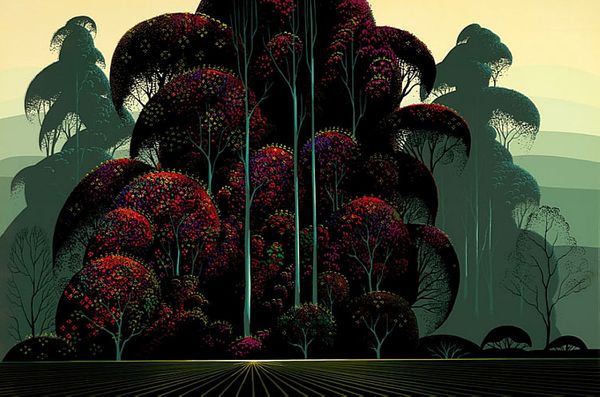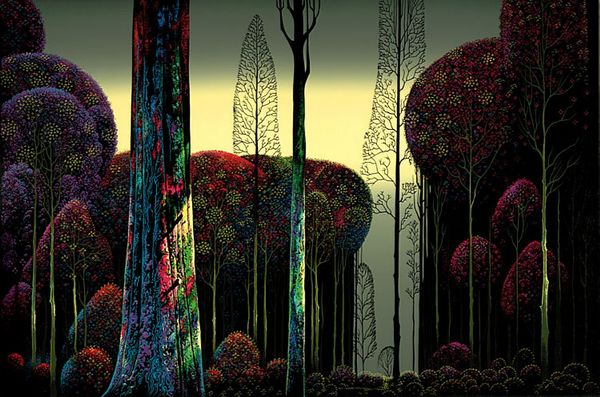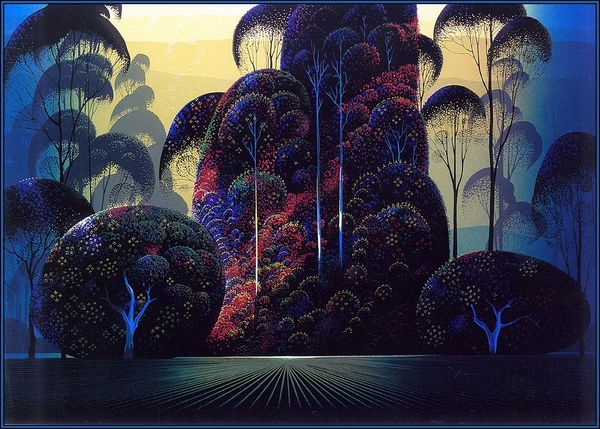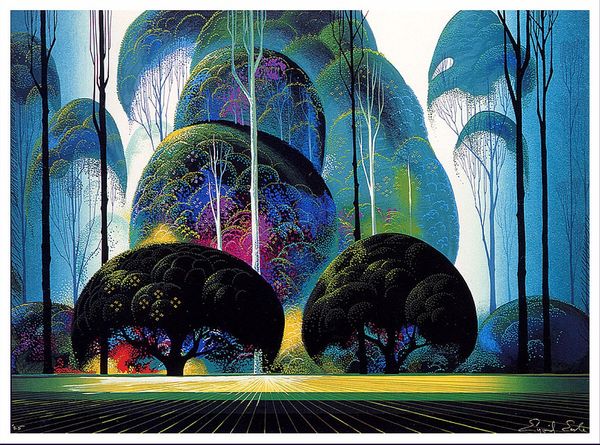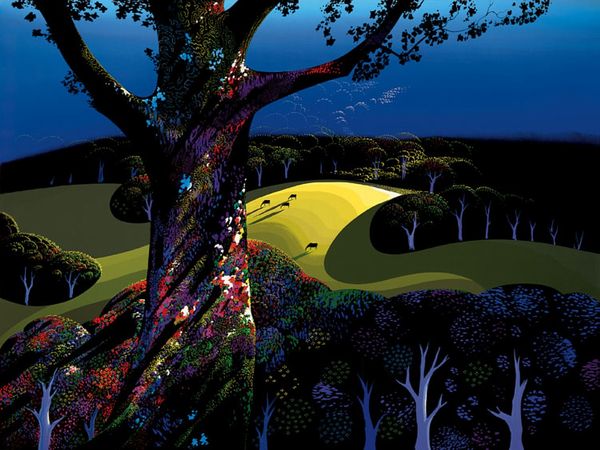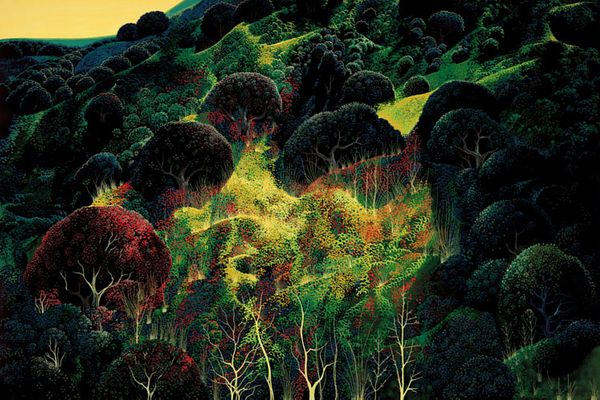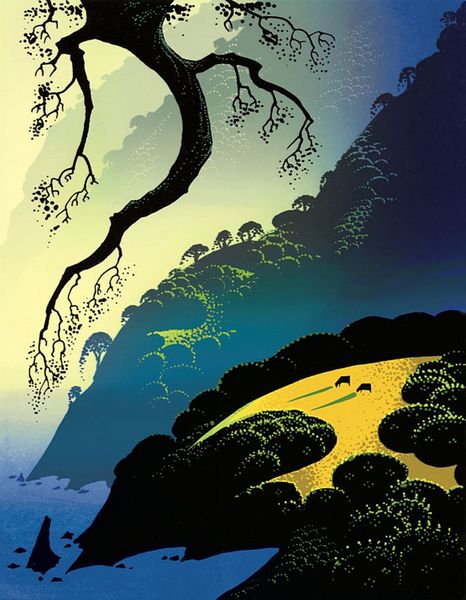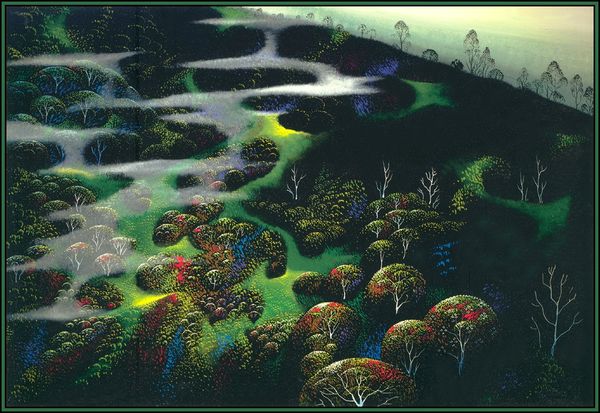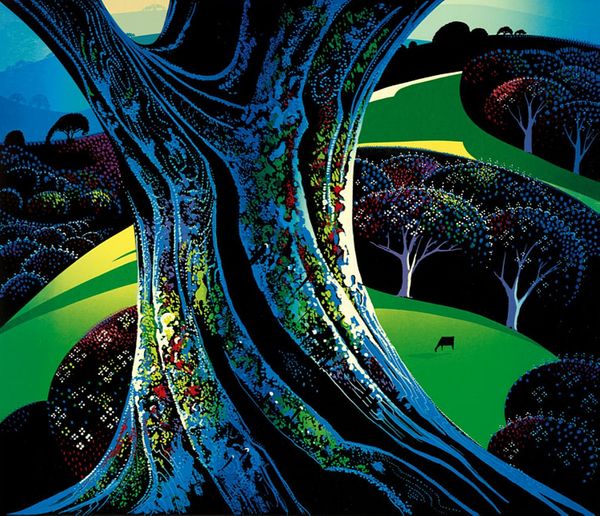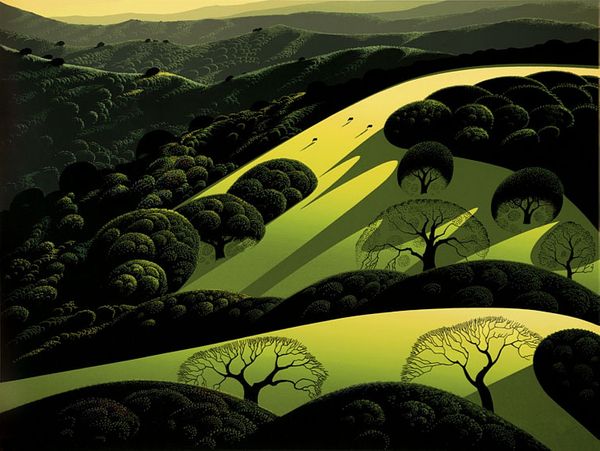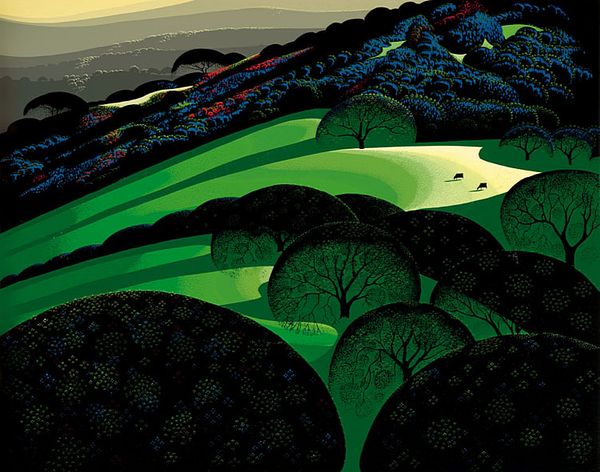
tempera
#
tree
#
fantasy art
#
tempera
#
landscape
#
fantasy-art
#
forest
#
line
Copyright: Eyvind Earle,Fair Use
Editor: This is “Mendocino,” a tempera painting by Eyvind Earle, created in 1988. I’m immediately struck by the rhythmic lines and how they create depth in such a stylized way. What’s your perspective on the formal elements at play here? Curator: The picture plane operates under a very specific logic. Consider the arrangement of forms: rounded, organic shapes meticulously patterned. Earle eschews traditional perspective in favor of a flattened, almost decorative space. Note how line becomes the dominant force, delineating each leaf and branch with precision, structuring the composition as a whole. Editor: It's like he’s creating a world from individual pieces, each carefully considered. The line work is very apparent. Curator: Precisely. Semiotically, each line and shape can be viewed as a signifier within the system of the painting. It's a visual language built on repeated motifs and variations thereof. Are we looking at a mimetic representation or a carefully constructed abstraction? Editor: I suppose it is both, actually. A representation but more a concept of nature. It uses familiar objects to create a space that feels otherworldly. Curator: It's tempting to get lost in symbolism, but where this painting succeeds is through its internal coherence of form. How does Earle’s meticulous detailing draw your eye through the canvas, engaging the work as an object, as well as a representation? Editor: I see what you mean. Focusing on the "how" rather than the "what" brings so much more to it. Thanks! Curator: Indeed. And, understanding the internal language enables deeper interpretations that stay grounded in observable facts and principles.
Comments
No comments
Be the first to comment and join the conversation on the ultimate creative platform.
